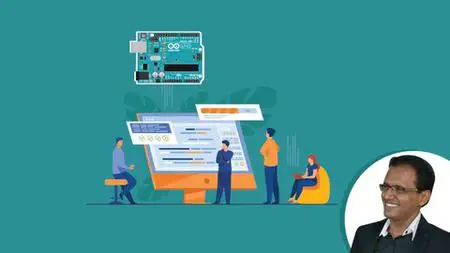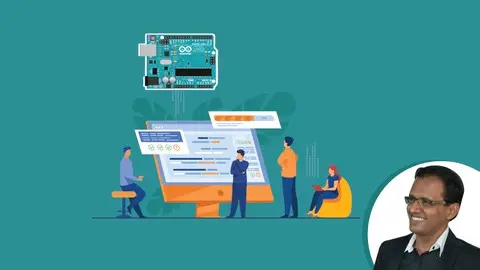How To Program Arduino For Scada Hmi Communications Via Opc
Last updated 6/2021
MP4 | Video: h264, 1280x720 | Audio: AAC, 44.1 KHz
Language: English | Size: 716.08 MB | Duration: 1h 17m
Last updated 6/2021
MP4 | Video: h264, 1280x720 | Audio: AAC, 44.1 KHz
Language: English | Size: 716.08 MB | Duration: 1h 17m
Learn how to program an Arduino to communicate with an OPC-Compliant SCADA HMI application via an OPC server
What you'll learn
Download and Install an OPC server application for Arduino
Download and Install OPC client software
Program an Arduino Uno for serial communication with an OPC server
Program an Arduino Uno for network communication with an OPC server
Use an OPC client to test OPC server communication to an Arduino
Configure a simple OPC-compliant HMI for network communications with an OPC server for Arduino
Requirements
Basic working knowledge OLE for Process Control (OPC)
Familiarity with the installation of software applications on the Windows OS platform
Elementary understanding of the "C" programming language
Basic understanding of elementary electronics
Familiarity with the Arduino Uno prototyping system and it's programming
Description
The Arduino is being used more and more every day for small scale SCADA and Automation projects, due to it's low cost and ease of connecting with various types of I/O devices. In many projects there is a need to connect the controller to a SCADA Human Machine Interface (HMI) application for the purposes of data visualization. OPC has become the essential de-facto standard for HMI communications with controllers from different vendors. It becomes quite useful, therefore, for an Arduino to be able to communicate with a SCADA HMI application via OPC. That is what this course teaches you to do! In this course, you will learn …1. How to download and install a FREE OPC server designed for the Arduino. 2. How to program the Arduino so that it is able to communicate with an OPC server via serial and network media. 3. How to use a simple OPC client to test OPC communication with the Arduino via the OPC server.4. How to configure a simple SCADA HMI to read data from and write data to the Arduino via OPC. The course has ready-to-go code that you can download as well as detailed wiring diagrams that you can use to build your own automation projects.
Overview
Section 1: Introduction
Lecture 1 Introduction
Lecture 2 Accessing Attached Resources and Setting Optimal Video Resolution
Section 2: Downloading and Installing the Software we will need
Lecture 3 Downloading and Installing the Arduino OPC Server
Lecture 4 Installing the Arduino OPC Library
Lecture 5 Downloading and Installing the dOPCDAClient Application
Lecture 6 Downloading and Installing the Winlog Lite HMI Application
Lecture 7 Hardware Components
Section 3: Wiring of the Inputs and Outputs on the Arduino
Lecture 8 Wiring of the Inputs and Outputs on the Arduino
Lecture 9 A Look at the Wiring of the Inputs and Outputs on my Workbench
Section 4: Building and Testing the OPC Arduino Project #1
Lecture 10 The Plan for this Section
Lecture 11 Building the Arduino Sketch - Part 1
Lecture 12 Building the Arduino Sketch - Part 2
Lecture 13 Testing the Arduino with the OPC Server and OPC Client
Section 5: Building and Testing the OPC Arduino Project #2
Lecture 14 The Plan for this Section
Lecture 15 Modifying the Original Arduino Sketch for OPC Network Communication
Lecture 16 Testing the Arduino with the OPC Server and OPC Client
Section 6: Connecting the Winlog Lite HMI to the OPC Server for Data Visualization
Lecture 17 Building a Simple SCADA HMI Application using Winlog Lite
Lecture 18 Running the SCADA HMI Application and Testing OPC Communication with the Arduino
Section 7: Bonus Section - How to Always get the Lowest Prices for my Courses
Lecture 19 Bonus Lecture
Electrical Engineers,Electrical Technicians,Electrical Tech or Engineering Students,Process Control Technicians and Engineers,Process Automation Engineers,Programmers working in the Process Automation field



